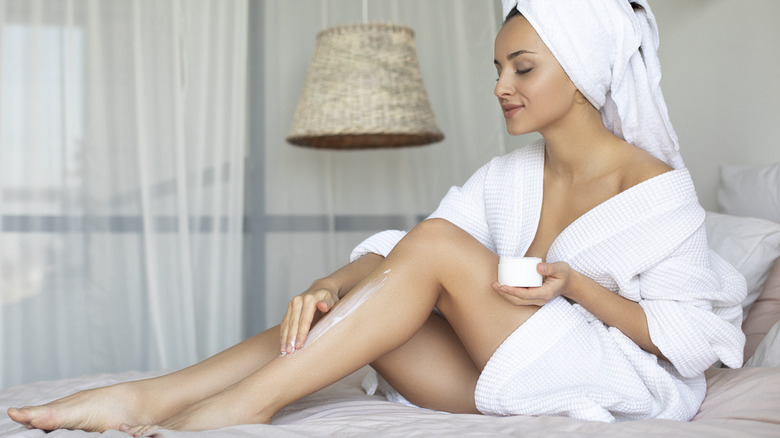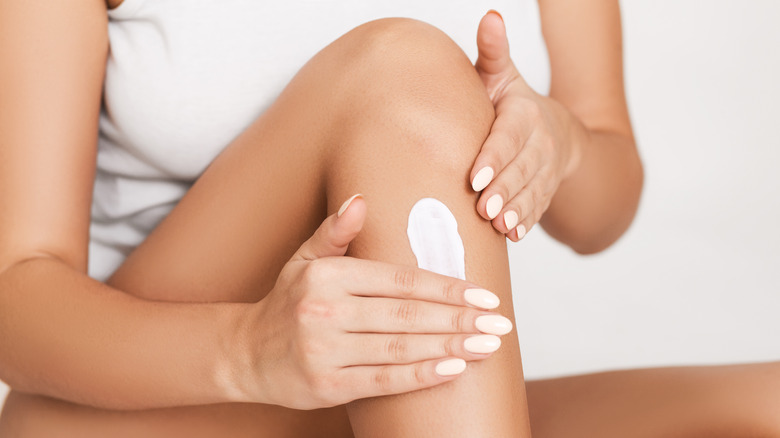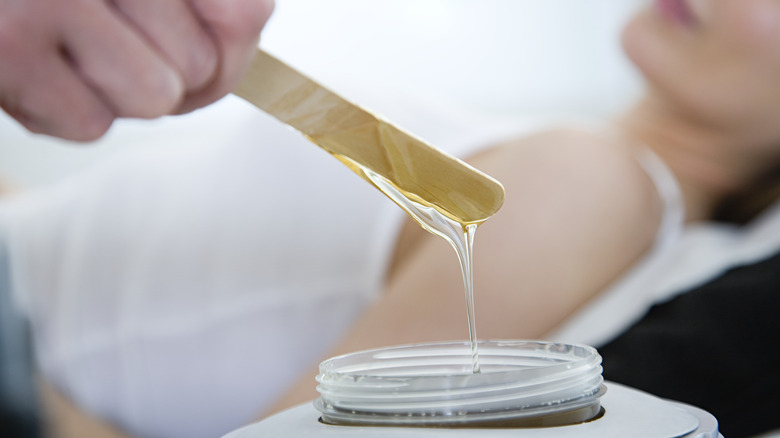The Risks To Be Aware Of If You Use A Pre-Wax Numbing Cream
With the summer creeping up upon us, waxing can sometimes feel like a necessary evil. Waxing requires removing hair by pulling it from the root using wax, which is better for reducing hair growth in the long run, and unlike shaving, it only needs to be touched up every four to five weeks. Over time, less hair will grow in the chosen area, making it perfect for those who want a smoother finish for longer. With its benefits, it is no surprise that people are making the swap from shaving to waxing.
However, with all its benefits, it doesn't mask the fact that waxing can be painful. Many people have found interesting ways to help reduce the pain of the treatment, one being using numbing cream. While numbing cream at first glance seems like the best cause of action for pain relief, it is wise to weigh the risks before slathering it on ahead of your next wax appointment.
Dangers of numbing cream
There is nothing wrong with wanting to make your next bikini wax less painful. However, those who want to use numbing creams should know that they come with their own set of risks. "There have been reports of people using them on larger areas for a longer duration of time, which resulted in systemic absorption," dermatologist Shari Sperling, MD, explained to PopSugar. Furthermore, if numbing creams like lidocaine are absorbed through the skin, it could lead to toxicity, according to Medical News Today.
Putting on too much numbing cream not only puts you at risk for systemic absorption, but it also prevents you from feeling the heat. Sperling goes on to explain that this could be dangerous since the individual is not aware of how hot the wax is, potentially leading to burns. It's best to apply numbing cream to the skin at least 30 minutes before your appointment and wash it off immediately after.
How to reduce wax pain
If you determine that numbing cream is not for you, there are other ways to reduce the pain brought on by waxing. Board-certified dermatologist Stacy Chimento, MD, spoke to Byrdie and explained the best course of action before and after waxing is to incorporate exfoliation into your routine. Exfoliating the skin allows the wax to grab just the hair and not the skin, relieving the amount of pain. To do so, you can use physical exfoliation options like sugar scrubs or exfoliating gloves, or you can opt for chemical exfoliation instead.
Natalia Romanenko, a CEO at BriskNPosh, recommends people plan around their period in order to reduce the pain as well. "Try not to wax at least five days before or during your period," she told Byrdie. "A sweet spot is three to four days after your period since a woman's pain tolerance is typically higher right after her menstrual cycle."


